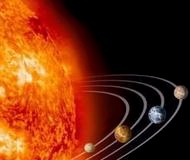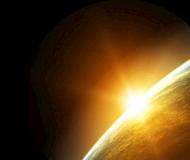
|
|||
| Contents | Prev | Next | |
![]()
16. Conclusion
Many theories have been formulated to explain natural phenomena on Earth and Space. The high temperature of the early Earth is attributed to the presence of extra carbon in the Earth's atmosphere. The short day of the early Earth is attributed to fast rotation of the earth. The seafloor is said to be recycling every 200 million years. The source of rust on Mars is still a mystery. The lowlands on the other planets are another mystery. And the list goes on.
However, no traces of high carbon level on the earth are found, or signs of any abnormal rotation of the early earth. None of the given theories are supported by evidence that can be seen or verified.
The question now is, if there were another sun and died out, wouldn't it produce all of these results? If the answer is yes, and it is, so there had to be another sun in the sky. Its remains are still there and can be evaluated.
Knowing what has happened in the past isn't only good information to have, but also helps solving problems occurring today and predicting the future. It may not be important for many to know whether a second sun existed or not, but certainly everybody cares about earthquakes and other natural disasters.
The effect of the second sun on the earth in particular, and on the solar system in general, is a very large topic. We have only touched the surface. In-depth analysis and details are far to cover in few pages. But hopefully the main points presented in this report have given an overall idea of the role that the Night Sun has played.
![]()
| The full report in a single page | ||
| Contents | Prev | Next |

